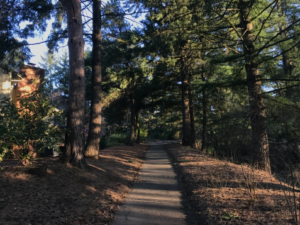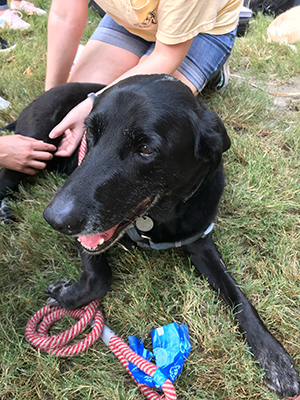The COVID-19 pandemic has, in a matter of days, changed just about everything in our daily lives, and our veterinary education is no exception. Near the end of our spring break, we received word that classes during the subsequent week would be cancelled to allow planning for a pivot to an online format.
What does an online veterinary education look like, you ask? Great question!
As I write this, our veterinary classes are set to resume in a few days, so I don’t have all the answers. What I can tell you is what life for me has looked like for the past week. Although no formal classes were held, our instructors continued to post class material so that we could continue our learning.
Back in College Station, our instructors have been working tirelessly to revise their courses to an online format. They posted new syllabi to reflect modifications to class formats, exam schedules, assignment due dates, and exam formats. Some classes will lecture by virtual video conferencing (such as Zoom), other classes will have content posted ahead of time for us to watch at our leisure, and other classes will ask us to review content ahead of time then meet virtually during our normal class time for a Q&A session. While it will be challenging to adapt to the various learning styles, I am extremely grateful that we may continue our education during this unprecedented time.
 Day-to-day life as a student looks a little bit different for everyone. Many of my classmates, myself included, are in their hometowns to be close (albeit socially distanced!) to loved ones. I am currently living with my partner and his roommate in Oregon.
Day-to-day life as a student looks a little bit different for everyone. Many of my classmates, myself included, are in their hometowns to be close (albeit socially distanced!) to loved ones. I am currently living with my partner and his roommate in Oregon.
Because of the time difference, I am trying to wake up early each day so that when classes resume I can cope with taking tests and being functional at 6 a.m. Pacific Time. It’s a small price to pay for being able to stay home and close to my parents and loved ones. My classmates and I study and collaborate via Google Docs. When the weather is nice, I take a break from studying by exploring the nearby walking trails. I stay in touch with friends and family by phone, Facetime, and social media. When all else fails, there are always board games to stay entertained.
Although these are uncertain times, I take comfort in knowing that my classmates, my instructors, and I are all doing our best to adapt to the evolving situation and keep each other safe. Our resiliency has helped us get to where we are now, and it will help us get through whatever the next few months hold.

